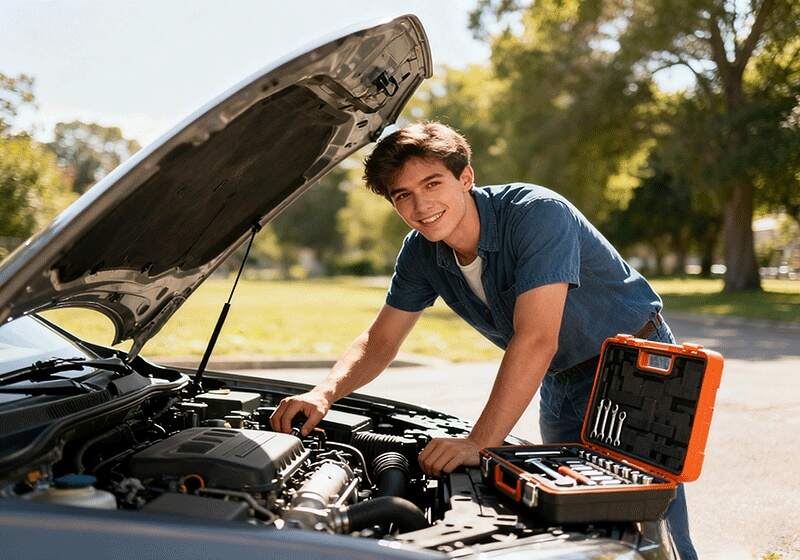Currency


Occasional minor abnormalities in a vehicle are common, but not all issues require an immediate trip to the repair shop. Mastering basic self-inspection skills not only helps you save on unnecessary expenses, but also enables you to assess situations correctly when it matters most, avoiding greater losses. This guide will walk you through troubleshooting common faults step by step, and tell you when you can handle it yourself (DIY) and when you must seek professional help.
Batteries and spark plugs are regular wear-and-tear parts. If you have basic hands-on skills, replacing spark plugs is a feasible DIY project. However, battery replacement involves the electrical system, so professional assistance is recommended.
The brake system is critical to safety—under no circumstances is DIY repair recommended! If you notice the above issues, immediately drive slowly and safely to the nearest professional repair shop for inspection and replacement.
Bulb replacement is relatively simple for most vehicle models. Car owners can purchase LED or halogen bulbs of the same model and replace them themselves. However, if the issue involves the headlight assembly or wiring, professional diagnosis is required.
Replacing the cabin air filter is the most cost-effective DIY maintenance task. It is usually located behind the passenger-side glove box and can be completed in a few minutes. However, if the issue involves refrigerant or the compressor, it must be handled by a professional technician.
Being a car-savvy owner does not mean you need to master all repair skills. Instead, it means you can make initial, correct judgments when problems arise—neither overreacting nor neglecting the issue. For the self-replaceable parts mentioned in this guide, such as cabin air filters and air filters, LHPJ (www.gzchenguan.com) provides reliable OEM-quality options to help you easily maintain your vehicle.
خطأ في تنسيق البريد الإلكتروني
emailCannotEmpty
emailDoesExist
pwdLetterLimtTip
inconsistentPwd
pwdLetterLimtTip
inconsistentPwd